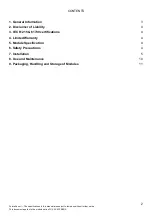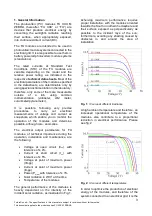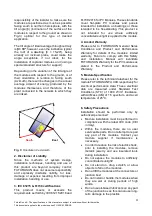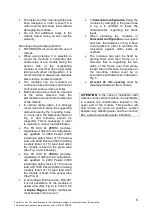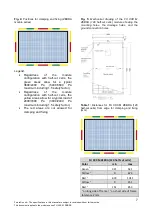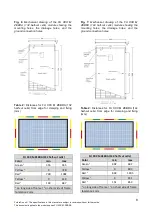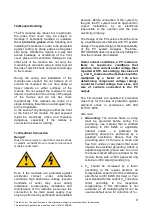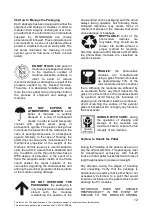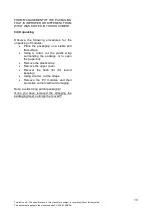
5
FuturaSun srl – The specifications in this manual are subject to revisions without further notice
This document applies to the module series FU XXX M ZEBRA
•
Ensure that wire cable connections are
routed in accordance with the junction box
manufacturer’s
recommendations.
Incorrect routing of the wire cable can lead
to stress damage to the junction box.
•
The minimum cable diameter for the
modules intended for field wiring is 4 mm².
•
Please use connectors following your
national regulation: i.e. in some countries
it is required to use always the same
connector in the entire system. Please
contact Futurasun to know the exact
connector type used in the module you
have purchased.
•
FuturaSun ZEBRA series uses various
connectors including Amphenol UTXC or
Stäubli PV-KST4 EVO connectors. Please
refer to your local FuturaSun sales
representative for exact specifications
•
The rated voltage of the connector should be
1500 V for 1500 V systems, 1000 V for 1000
V systems and the rated current ≥ 30 A.
•
The cross section for the connector is 1 x
4.0 mm².
•
Do not leave cable connectors exposed in
adverse climatic conditions. Water and
dust deposits inside the cable connectors
can cause long-term damage.
•
Broken module glass, a torn back sheet, a
broken junction box or broken connectors
are
electrical
safety
hazards;
consequently, contact with a damaged
module can cause electric shock.
•
Fire ratings: Spread of Flame and Burning
brand Fire Class C (acc. to UL
61730/UL790). Ignitability Test Class E
(acc. to IEC 61730-2).
•
The total voltage of modules connected in
series corresponds to the sum of the
voltages of the single modules; whereas
connecting the modules in parallel results
in adding up the currents. Consequently,
strings of inter-connected modules can
produce high voltages and high currents
and constitute an increased risk of electric
shock and may cause injury or death.
•
Modules shall not be connected in series
to create strings with a higher voltage
than the maximum system design voltage
and/or the maximum range allowed by the
inverter and/or the safe operational
voltage range of safety devices
/switchgears composing the system, in
the environmental conditions the system
will be installed.
•
For installation, maintenance, or before
making any electrical connection or
disconnection,
ensure all modules in the
PV array are exposed to a light intensity
that is less than 400 W/m
2
!!
If necessary,
the modules should be covered with an
opaque cloth or other material in order to
shield them from exposure to light intensity
greater than 400 W/m
2
.
7. Installation
7a) Module Mounting
•
The FU modules are qualified for an
operative temperature within the range of -
40 to +85 °C.
•
The FU modules can be installed at a
maximum operating altitude of ≤ 2000
meters.
•
When installing FU modules, local building
code requirements and regulations must
be observed at all times. Sufficient
ventilation of the module backside is
required and the mounting configuration
(e.g. sufficient clearance) should be
adapted accordingly
.
•
Do not drill any additional holes into the
module frames and do not cover the
drainage holes
.
•
Pre-assembled
mounting
systems
must be confirmed by FUTURASUN in
writing in advance.
•
The modules can be mounted in every
angle from horizontal to vertical, avoiding
configurations with the junction box up-
side down at all times (e.g. trackers with
“sleep mode”).
•
In order to maximize module exposure to
direct sunlight, the modules should be
oriented to the south in the northern
hemisphere and to the north in the
southern hemisphere.
Mounting Methods
:
Mounting using mounting holes:
•
Each module must be securely
fastened at a minimum of 4 points.
•
Use the 4 mounting holes (slots, see
Fig. 4 ) on the PV module frame to bolt
the module with stainless steel screws
and nuts to the mounting framework.


